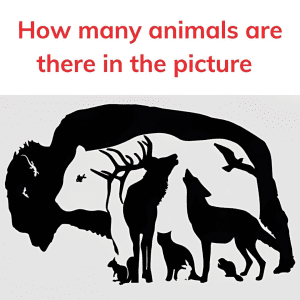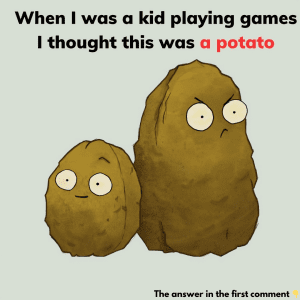Have you ever encountered a mind-bending puzzle that made you question your first instinct? Here’s a fun one that’s bound to test your perception, logic, and attention to detail. In the photo, we see three women standing together, all dressed in stunning traditional outfits. The challenge? One of them is a mother, and the other two are her daughters. So, who is the mother?

At first glance, the puzzle might seem simple, but it’s designed to trick your mind and make you second-guess your assumptions. Before we reveal the answer, let’s break down each woman’s appearance, consider some common mistakes people make, and see why this puzzle is trickier than it seems. By the end of this article, you’ll have sharpened your observational skills and might even learn something new about how we perceive age and family relationships.
Introducing the Optical Illusion Puzzle
This puzzle is deceptively simple: Identify the mother among the three women. While the image doesn’t provide direct clues, it pushes you to look deeper and analyze the details more carefully. Most people instinctively assume that the mother will look older or have some distinguishing feature that sets her apart. But what if, in this case, the mother looks just as young and vibrant as her daughters?
Take a moment to look at the women in the image. Who do you think is the mother? Don’t rush—pause and make your guess. Once you’ve made your choice, keep reading, and we’ll take a detailed look at each woman to see if your assumption was right.
Common Mistakes in Solving the Puzzle
When solving a puzzle like this, it’s easy to fall into certain traps. Let’s examine some common mistakes people make when trying to figure out the mother:
- Assuming age based on appearance: We often associate youth with daughters and maturity with mothers, but this isn’t always the case. Family members can look remarkably alike, and many mothers maintain youthful appearances.
- Looking for obvious clues: We tend to focus on obvious features like wrinkles, gray hair, or posture, expecting them to give away the mother’s identity. However, such clues may not be present or obvious in this particular case.
- Ignoring cultural and environmental context: In many cultures, mothers and daughters may dress similarly, especially in traditional attire like ao dai, making it even more difficult to differentiate them based on appearance alone.
These assumptions can cloud our judgment, but let’s dig deeper and break down each woman’s appearance to see if any subtle details can help us identify the mother.
Analyzing Each Person: A Closer Look
Let’s examine each woman in detail to see what clues might indicate who the mother is.
The Woman in the Orange Ao Dai
The woman on the left is wearing a bright and beautiful orange ao dai, an elegant traditional Vietnamese dress. At first glance, her youthful appearance and radiant smile might suggest that she is one of the daughters. However, youthfulness can sometimes be deceiving, especially if the mother happens to have a youthful look. Here’s what we notice:
- Facial expressions and posture: Her relaxed, cheerful stance and easy smile give her a carefree, youthful vibe, which might suggest a daughter.
- Style and demeanor: Her outfit is strikingly similar to the others, and her demeanor doesn’t stand out as being particularly maternal or protective.
While she certainly looks youthful, she might not be the mother, but let’s not rule her out just yet.
The Woman in the Pink Ao Dai
In the middle, we find a woman wearing a soft pink ao dai. Her placement in the center could give us a hint that she might be the most important figure in the family, potentially the mother. But is this a subtle clue, or is it just a composition choice by the photographer? Let’s analyze further:
- Age indicators: Like the others, she looks relatively young, making it hard to tell whether she is a mother or daughter.
- Body language: She is holding hands with the woman in orange, which might suggest a bond, but this doesn’t necessarily point to a mother-daughter relationship. Holding hands could simply be part of the photo pose.
Despite her central position, we can’t be sure that the woman in pink is the mother based solely on these details.
The Woman in the Green Ao Dai
Finally, let’s take a closer look at the woman on the right, wearing a green ao dai. At first, she may seem just as youthful as the others, but a closer inspection reveals some subtle hints that she might be the mother:
- Subtle confidence and protective gesture: Notice how she stands slightly behind the others, which can be a common maternal gesture—a protective stance. It’s often the role of mothers to stand slightly back, making sure their children are in the spotlight.
- Body posture: Her posture is a bit more formal compared to the others, giving off a vibe of someone who might be the elder or more authoritative figure in the family.
- Fashion choice: While all the women are dressed in traditional ao dai, her green outfit might set her apart, signaling a distinction between the generations.
Considering these factors, the woman in green seems to fit the role of the mother the best. But let’s confirm.
Revealing the Answer: The Mother Is…

After analyzing each person’s appearance and considering the subtle clues, the woman in the green ao dai is indeed the mother.
You might have been surprised by this, especially if you initially focused on the women’s youthful appearances. The key lies in the green dress, her slightly distant posture, and her protective stance. These minor details—often overlooked—are what truly reveal the mother’s identity in this puzzle. It’s a great example of how small, seemingly insignificant traits can provide big clues if you pay close attention.
Encouraging Discussion: What Did You Think?
Did you guess correctly? Or were you tricked by the similar fashion choices and youthful features? Let us know in the comments if you managed to identify the mother, and share your reasoning! This puzzle encourages us to look beyond our initial assumptions and dig deeper into the subtle details that tell a bigger story.
Feel free to share this fun puzzle with your friends and family to see if they can guess the right answer. It’s an excellent way to test observation skills and spark interesting conversations about how we perceive people and relationships.
Conclusion: Sharpen Your Mind with Fun Puzzles
This optical illusion puzzle serves as a fantastic exercise in observation, perception, and logical thinking. It reminds us that things are not always as they seem and that even the smallest details can reveal important truths. If you enjoyed this challenge, why not try more visual puzzles and brain teasers? They’re not just fun; they also enhance critical thinking skills and improve your ability to notice the finer points in everyday life.
So, were you surprised by the answer? The next time you face a tricky puzzle, remember: sometimes, the key lies in looking just a little closer. Keep challenging yourself, and enjoy the mental workout!


